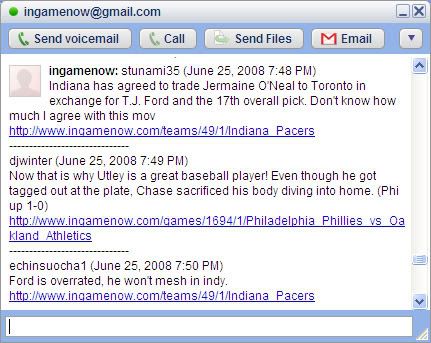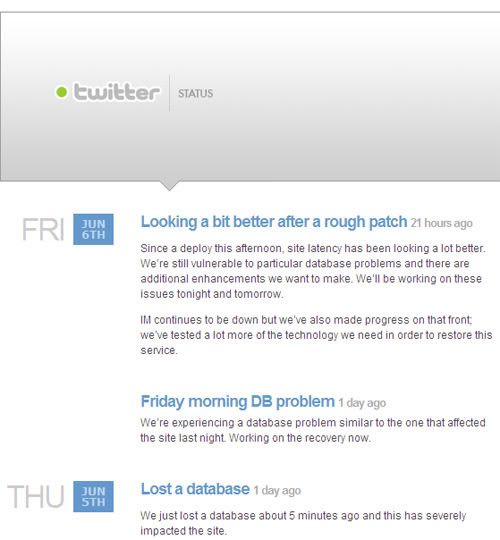Below are eight feature requests that come out of daily frustrations on various Google services. Each is relatively minor and doesn't make me want to switch services... it simply creates minor annoyances. There is a chance that some of these requests are already possible. If so, I would love to hear how to access the features... and if so, it suggests that the features aren't easily accessible and/or well marketed.

1. Google Talk Audio Alerts For years, cell phone users have been able to set specific audio notifications for each contact. In simplest form, I want the ability to mute notification sounds on Gtalk and select users whose chats would promote audio alerts. Better yet, I would like to set specific sounds to different users or groups.
2. Google Talk Contact Ordering Alphabetic or frequency sorting are the only current ways to organize your chat contacts. Why?! 3. Google RSS Sharing I love the action bar below each article in Google Reader (in fact, I wish it were above the article or available on the left panel). My most common use-case is the email option - however, I wish that I could share it with a defined / private user group. Until more controls are available for sharing, I find it too general and thus unappealing.
4. Google Reader to Facebook, Twitter & Wordpress Emailing articles from within Google reader is great... I'd also love the ability to share and comment via Facebook (with Facebook Connect?), Twitter and Wordpress. A no brainer.
5. Google Calendar Notifications (via Gmail) It's great that Google Labs now allows Gmail customizations and enhancements. I've placed my Google Calendar prominently on the upper left corner of my Gmail pages... but I would like better, stronger notifications for upcoming meetings. Unfortunately the mini notification on the bottom right corner rarely catches my attention.
6. Chrome Integration I believe it is coming... but: I use Chrome and I live on Google services (Gmail, Gtalk, Google Reader, Calendar, etc). Chrome is the most logical way to tie the services together, enable greater customization and add more horsepower. For instance, Google Reader could be entirely built into the browser. Gtalk and calendaring could as well.
7. Gallery of Gmail Themes People love Gmail themes. When Google released themes for corporate accounts, our office (unexpectedly) rejoiced and people discussed their favorite themes. Bizarre? Yes.... but people love customizations. I would love to see a gallery of customized themes as, frankly, I am too lazy and inartistic to set up my own theme.
8. iPhone Apps Post coming soon on this front....










